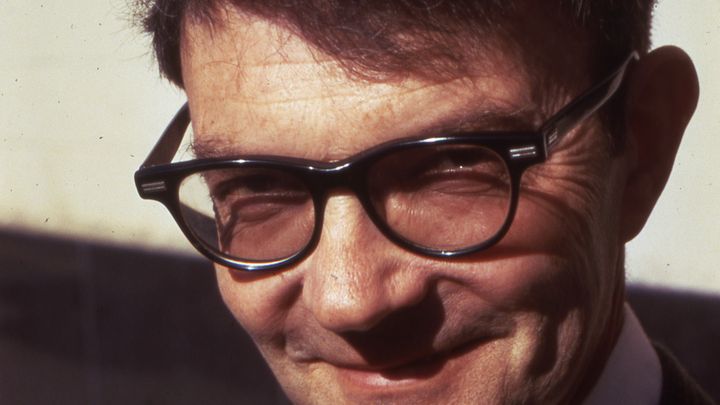
Support Leon Salanave's Legacy: Build an Observatory
Donation protected
Leon Edward Salanave was a 20th century astronomer and scientist who helped design and build San Francisco's famous Morrison Planetarium, after World War II. [1]
Leon was also a founding member of the Astronomical Society of the Pacific and for many years edited the organization's journal, Mercury.
Leon's life was shaped by a fearless passion for truth.
He built his own telescopes and radios, and even discovered a comet, when he was just a teenager.
During World War II Leon taught navigational skills to Naval officers, on San Francisco Bay's Treasure Island.
After WW2, Leon was one of the people who proposed that San Francisco build a planetarium - which made San Francisco world famous.
In the 1970s Leon participated in a series of symposia - held at San Francisco's Exploratorium - called Earth 2020: Visions For Our Children's Children.
The poster for the lectures featured an artist's impression of the inside of an O'Neill space colony (see, also, Rendezvous With Rama) - clearly the belief, in the late 1970s, was that, by 2020, humanity would surely be living in space.

Now it's fifty years later and the United States is in decline. How are we going to fix this?
We want to help those young astronomers and scientists of the future, blossom.
We want to keep Leon's vision of the future alive - the spirit of open scientic inquiry and continuing education. It's not about technology. It's about civilization. Reading, writing, and arithmetic are what we do in order to create and maintain a safe space for art and culture.
We propose to create an astronomical observatory, sited in distant Northern California - around the snow line.
Our instruments will be connected to the Internet and controllable via web-based interfaces. We will encourage observation of the wonders of the universe and the study of basic orbital mechanics.
We will work with interested schools, teachers and students to expose the next generation to scientific methods and to direct participation in the scientific process, including mathematics.
Here are our next steps:
Step 1: retain a lawyer and form a nonprofit organization
Step 2: locate and purchase land on which to site an astronomical observatory
Step 3: evaluate grants and other funding mechanisms for continued operation
Step 4: initiate projects pursuant to our stated goals, above
More to come ...
See us on the internet: salanave.org
Footnotes:
- [1] It is our understanding that the original Morrison Planetarium analog projector and infrastructure was donated to the Smithsonian Museum. We searched their website for any information related to "morrison planetarium" and found 34 references to someone named Morrison but no planetarium. We think selling tickets to shows at Smithsonian's "Albert Einstein Planetarium" may take precedence over the history of planetaria.
Organizer
Richard Childers
Organizer
Redding, CA
